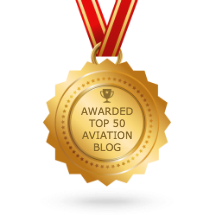FAA Tweaks Sport Pilot Ticket for the Better
By Scott Spangler on February 24th, 2010The FAA published the final rule on 22 proposed improvements to sport pilot certification and operation in the February 1, 2010 Federal Register. It’s taken me a month to brew the courage to read it because I felt that a number of them would take sport pilot down the same path the private pilot certificate followed in the last century.
 After World War II, the private pilot requirements weren’t that much different from today’s sport pilot ticket. Then the FAA started adding requirements to keep pace with technology, which was only right. One private ticket should be enough, but the NPRM appeared to put sport pilot on the same path. Proposing that sport pilots get an hour under the hood violated every concept that led to the creation of this Day/VFR-only ticket. Yeah, new fixed-wing LSAs have glass up to the simulated IFR training mission, but what’s the point, other than someone thought it was a good idea?
After World War II, the private pilot requirements weren’t that much different from today’s sport pilot ticket. Then the FAA started adding requirements to keep pace with technology, which was only right. One private ticket should be enough, but the NPRM appeared to put sport pilot on the same path. Proposing that sport pilots get an hour under the hood violated every concept that led to the creation of this Day/VFR-only ticket. Yeah, new fixed-wing LSAs have glass up to the simulated IFR training mission, but what’s the point, other than someone thought it was a good idea?
Reading elsewhere that only 150 or so people and AOPA, ASC, EAA, NAFI, and USUA submitted comments didn’t do much to assuage my cynical skepticism. Given the whole of aviation and its problems, sport pilot barely registers in the overall picture. With so few comments, I figured the FAA would approve its proposals and move onto more pressing problems.
 Imagine my surprise to read that the FAA withdrew the problematic proposals—including hood time—and approved those that will benefit the greatest number of people. First among them is the use of Special LSAs, like the Cessna Skycatcher, by Part 141 flight schools (see Ground School Delivers Consistent Quality). With the outcomes of these proposals, the FAA has sedated by cynicism and planted a seed of hope for the future.
Imagine my surprise to read that the FAA withdrew the problematic proposals—including hood time—and approved those that will benefit the greatest number of people. First among them is the use of Special LSAs, like the Cessna Skycatcher, by Part 141 flight schools (see Ground School Delivers Consistent Quality). With the outcomes of these proposals, the FAA has sedated by cynicism and planted a seed of hope for the future.
Equally important for schools and their teachers, sport pilot instructors will no longer need five hours in each make-and-model aerial classroom, and they will not be transferred to the bureaucratic gauntlet of Subpart H. It would have been nice if the FAA had also withdrawn the requirement for sport pilots to carry their logbooks when they fly, but it’s still there (and pilots should carry a copy, not the original).
Other worthwhile changes, all of which take affect on April 2, 2010, include mountain flight that tops out at the loftier of 10,000 feet MSL or 2,000 feet AGL. In the same practical vein, before their solo cross-country, SP students needed communication and navigation radio training, even if their LSA was not equipped for it. Now, they only need the training if the LSA has the gear. Even more impressive is that this was the FAA’s idea. Bravo!
 While the changes are beneficial—and important to those they affect—most of them are little consequence to most in aviation, until you think it through. For example: To get a private in a powered parachute or weight-shift trike, the student needs three solo trips around the pattern at a towered airport.
While the changes are beneficial—and important to those they affect—most of them are little consequence to most in aviation, until you think it through. For example: To get a private in a powered parachute or weight-shift trike, the student needs three solo trips around the pattern at a towered airport.
Many (most?) towers have a hard time working these slow fliers into the pattern, so meeting this requirement isn’t easy. The FAA could have gone two ways here. It could have told towers to provide the necessary services and deal with the speed differences, which would make the lives of faster fliers way more interesting. Instead, its new requirements allow students to gain the necessary radio experience during dual instruction in an airplane.
I’m guessing that most readers will find these changes of only passing interest, and if you want more precise info, you can follow the links at the head of this post. What may be of primary importance is that the FAA, given all of its more pressing problems, didn’t take the easy way out, and for that I offer my thanks by the shovelful. – Scott Spangler
Related Posts:







June 25th, 2010 at 8:25 am
Hey Dude,
Really your thought will be a great mainstream for those who are looking for WWII Airplanes. As it sounds very good though i would like to light it at the wall of my facebook.